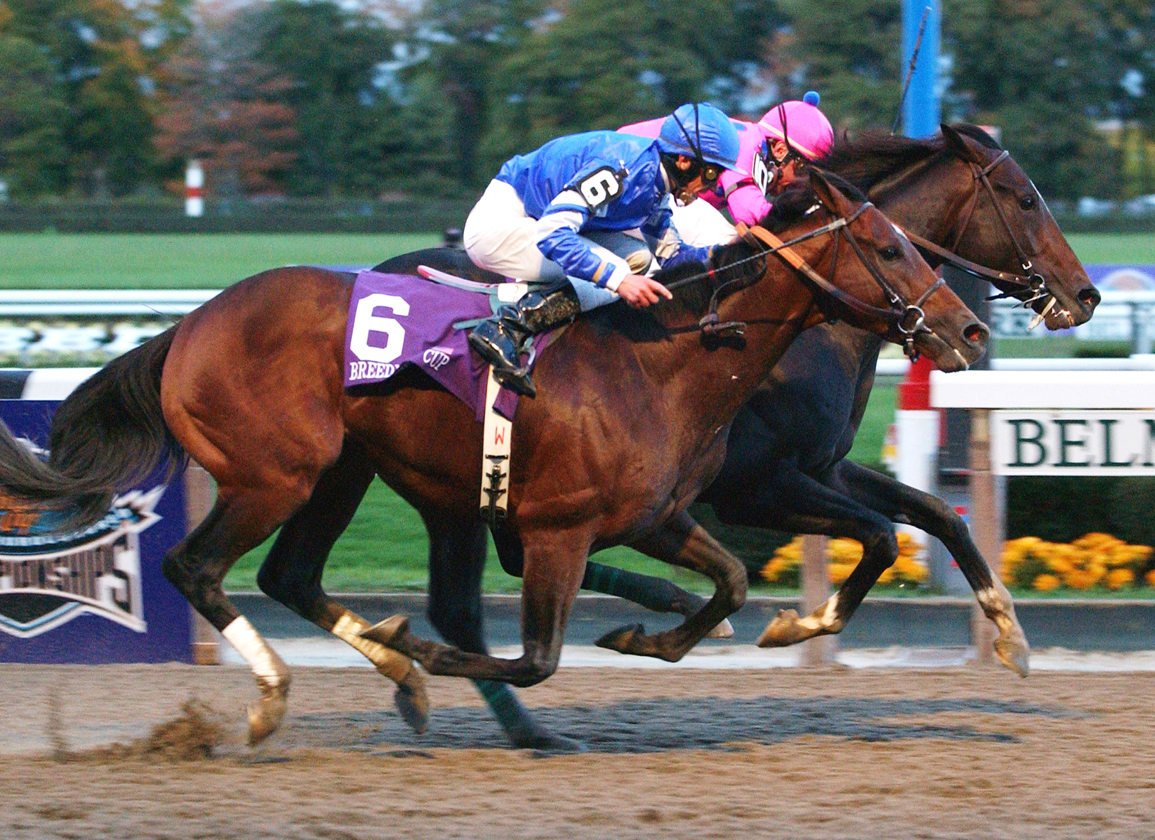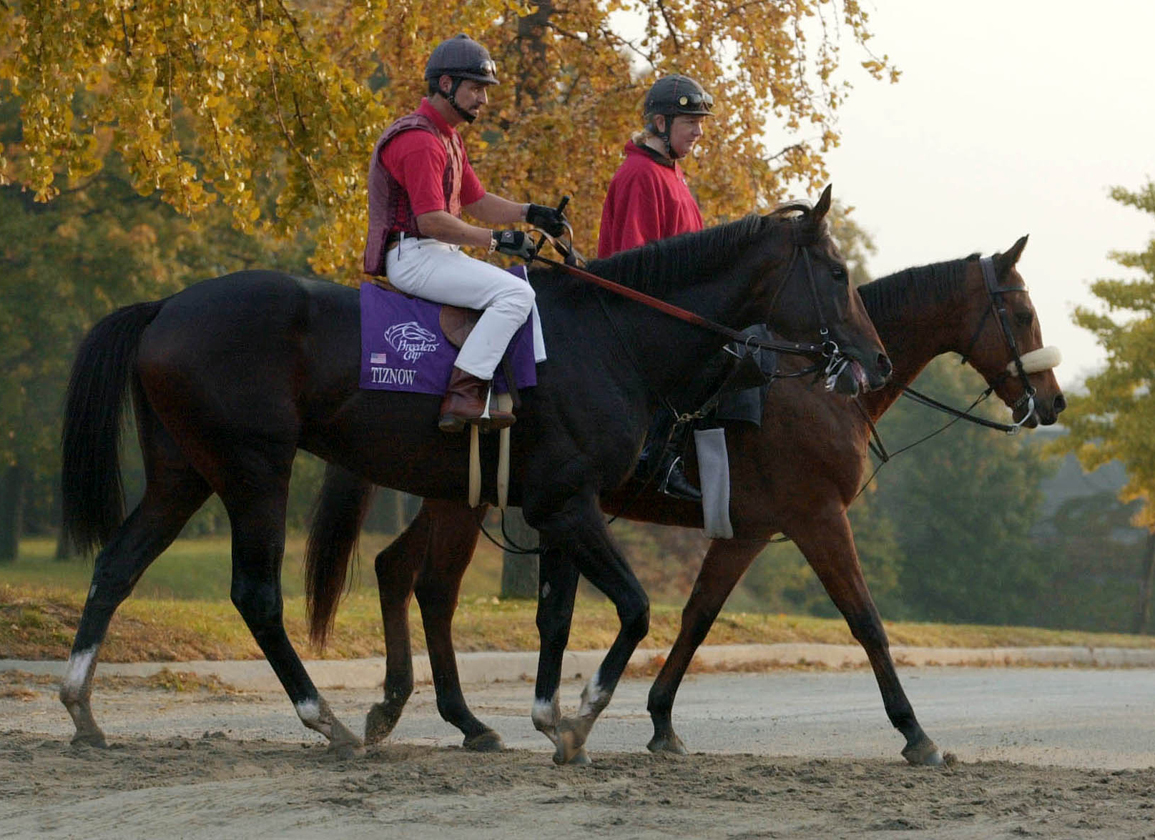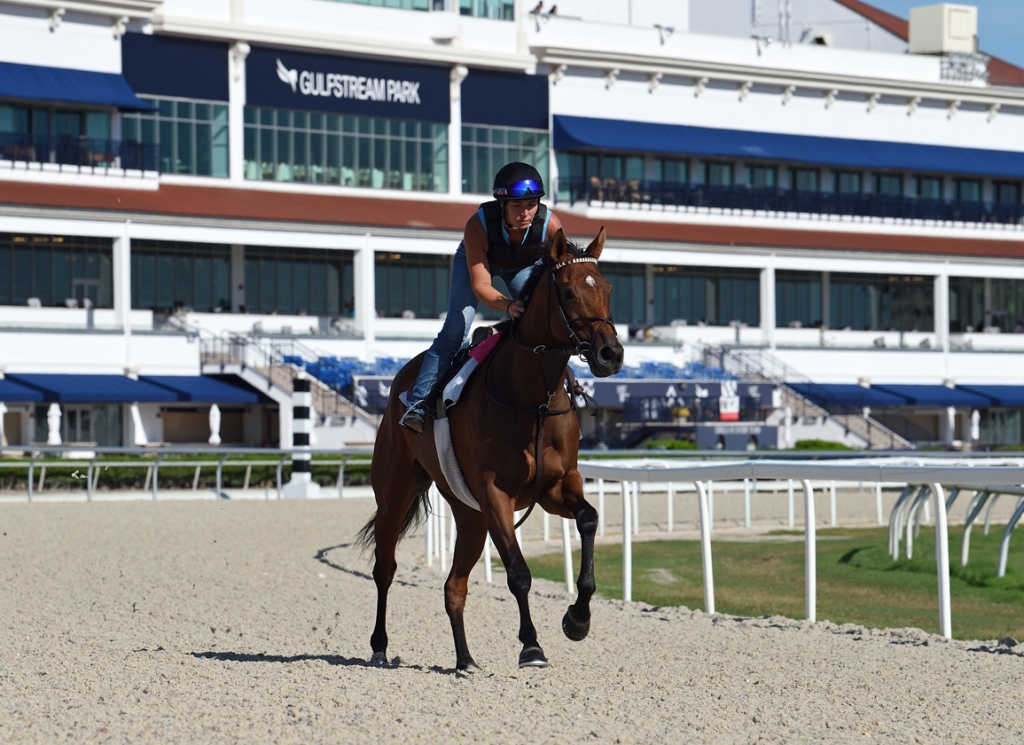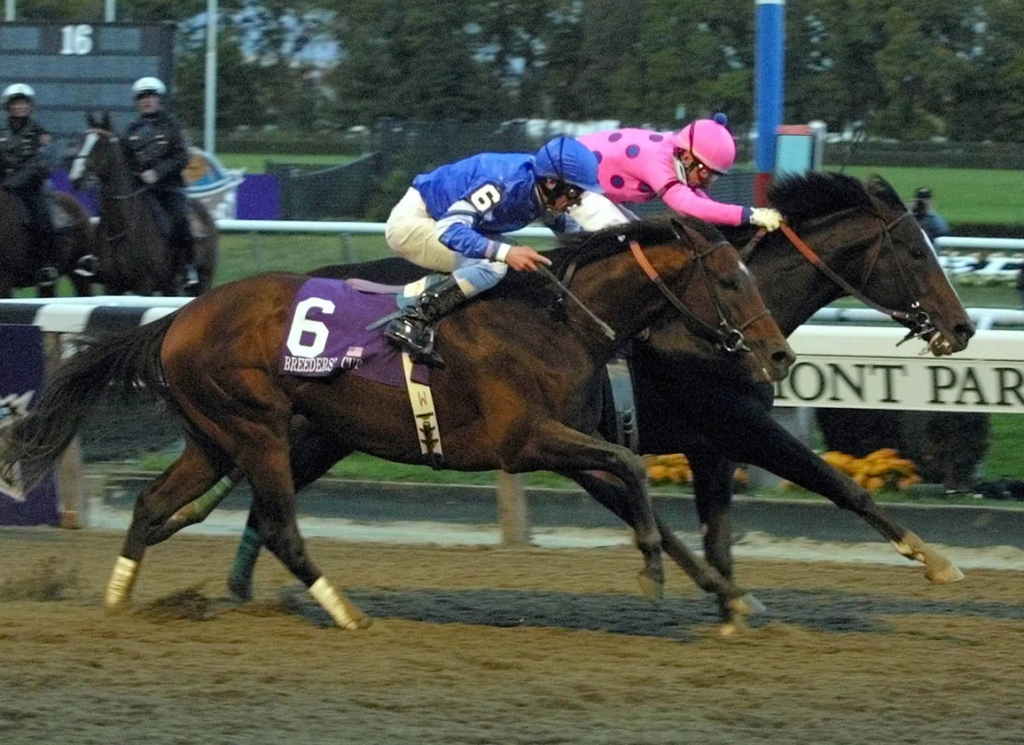As the calendar turns to 2022, the final crop of foals from legendary racehorse and sire Tiznow will become yearlings. Soon-turning 25, Tiznow has sired over 80 blacktype winners including 14 Grade I/Group 1 winners after nearly two decades as a cornerstone stallion at WinStar Farm.
This year, the successful sire enjoyed his first full year of retirement. WinStar Stallion Manager Larry McGinnis said that Tiznow still shares a similar routine to the other stallions in the stud barn.
“He does get a bit more leeway because he's a teacher's favorite,” McGinnis admitted. “If there's a day where he wants to stay out in his paddock, we'll feed him outside. I think he has developed a little bit of a bravado as he's gotten older. He does try to intimidate the young boys as they go through. He does what he wants, when he wants and it will be like that for the rest of his life.”
Such a lifestyle is nothing new for Tiznow, who was well documented on the racetrack for doing most everything on his own terms. McGinnis said that attitude never wavered throughout the blaze-faced bay's career at stud.
“Tiznow is the smartest horse I've ever been around. When we first got him, I noticed that. He looks a lot and nothing fazes him. One time we had him on a tour and a girl got stung by a bee right next to him. She screamed bloody murder and he just stood there. He has never shown that he's afraid of anything.”
Tiznow and McGinnis have developed a special bond as they've shared the past two decades together at WinStar. Before Tiznow's arrival, McGinnis was the assistant manager at Prestonwood Farm as the property transitioned into WinStar Farm.
“They told me that we had a stallion coming in and asked if I wanted to be stallion manager,” he explained. “I didn't realize that the horse coming in was Tiznow.”
Tiznow was no shoo-in to become a successful Kentucky stallion when he first arrived at WinStar, but the grit and determination the California-bred son of Cee's Tizzy showed during his illustrious career on the racetrack was soon reflected in his offspring.
He was the leading freshman sire of his crop after producing 2005 GI Breeders' Cup Juvenile Fillies winner Folklore and 2009 GI Dubai World Cup winner Well Armed. His success continued throughout his career with the likes of 2008 GI Travers S. hero Colonel John, 2008 GI Belmont S. winner Da' Tara and 2016 GI Breeders' Cup Mile victor and now WinStar sire Tourist.
“Tourist is pretty much like his dad-even-keeled,” McGinnis explained. “Nothing much gets him wound up. I've rarely seen one of Tiznow's progeny that didn't have composure and know how to handle things without getting excited about it.”
Tourist and Crestwood Farm's Tizdejavu are the only sons of Tiznow standing in Kentucky today, with several more at stud in regional markets. If his top performer this year in GSW Midnight Bourbon someday joins a stallion program, the colt could be the last of Tiznow's sons to begin a career at stud.
And yet, Tiznow still has his last few crops waiting to show their worth on the racetrack. Fittingly, his final crop that arrived this year came 20 years after the unforgettable day at Belmont Park when Tiznow won his second straight GI Breeders' Cup Classic.
Owned by Cees Racing Stable and campaigned to a champion 3-year-old and Horse of the Year season in 2000 by trainer Jay Robbins, Tiznow returned to the Breeders' Cup in 2001 to defend his Classic title with only one win to his resume as a 4-year-old.
Even his regular rider, Hall of Fame jockey Chris McCarron, couldn't be certain of Tiznow's true ability as they approached the starting gate.
“There was always some question in your mind of if he peaked as a 3-year-old,” McCarron said. “But the way he trained, I knew there was more. It was just a question of which Tiznow was going to come to the party. Fortunately, he rose to the occasion on the most important day of his life in the 2001 Breeders' Cup Classic.”
Sent off as a 7-1 gamble behind the top pick in Juddmonte homebred Aptitude as well as European invaders Galileo (Ire) and Sakhee, Tiznow stalked in third position for most of the trip until McCarron looked out of the corner of his eye to see Sakhee coming to their outside. The pair fought neck and neck down the stretch and as the wire grew closer, Sakhee bobbed his head in front.
“I had it in my mind that I was not going to hit him with the stick,” McCarron explained. “I wanted to let him be the boss. When Sakhee went by me by a neck I thought, 'Well, I've got nothing to lose. I might as well see if he'll respond from a little tap.' So I tapped him once left-handed and I felt him accelerate. He went back on and overtook Sakhee right in the shadow of the wire.”
The roar of the crowd swelled as race caller Tom Durkin exclaimed a line that will forever be held in racing's history book, pronouncing that Tiznow had won it for America.

Tiznow towers over rival Sakhee as he edges past the wire first in the 2001 Breeders' Cup Classic | Horsephotos
“I don't really know if in my notes previous to that if I was going to say that Tiznow wins it for America,” reflected Durkin. “I don't know, but it was in my subconscious somewhere. Some would argue that it was a rather jingoistic thing to say, but that was the story. Tiznow was carrying an American banner and he was trying to beat a foreign horse, so that was a big story there.”
The 2001 Breeders' Cup was the first international sporting event following the Sept. 11 terrorist attacks six weeks earlier. SWAT teams lining the rooftops and security check-ins made for a very abnormal day at Belmont Park.
“When Tom Durkin screamed Tiznow wins it for America, that was a really happy day,” McCarron recalled. “With the devastation and the tragedy of 9/11, people were really longing for something to make them happy. It just so happened that the Yankees won the World Series that year and then when Tiznow wins it for America, that was kind of the icing on the cake.”
Tiznow retired after earning the title of the first and only horse in history to claim back-to-back Breeders' Cup Classics, leaving cherished memories in the hearts of racing fans as well as those who knew him best.
Today, McCarron looks back fondly on Tiznow's days in training when the opinionated and super-sized colt protested from being led into a stall and had to be turned around and backed in, as well as his most memorable antic during his final workout ahead of the 2001 Breeders' Cup when he refused to move forward on the racetrack, standing stoically for 35 minutes before finally moving ahead and putting in a blazing mile-long work.
“He had a very strong will and didn't do anything unless he was ready to do it,” McCarron said. “He was quirky, but what I learned from him was tremendous. He taught me a lot about the relationship between a person and a horse. Once I learned, I tried to figure out what made him tick and just let him be the boss. That's what he wanted, so I just followed his lead and fortunately, we had a lot of success together.”
These days, as both Tiznow and his rider enjoy the laid-back life of retirement in the Kentucky Bluegrass, it isn't uncommon for McCarron to stop in at WinStar. Along with visits from his old friend, Tiznow is still a fan favorite during the tours at WinStar and of course, he is happily looked after by McGinnis and the rest of the WinStar stallion team.
“He's just been kind of a rock,” McGinnis said, reflecting on his two decades with the stallion. “He helped my career out as much as Distorted Humor and Speightstown did. If it wasn't for them, I'd just kind of be a regular Joe. Tiznow was a good, useful sire that was a California-bred and really, if you think of it, shouldn't have been a stallion, but he made himself one by winning two Breeders' Cup Classics. I'm not sure if anybody is ever going to do that again.”
The post 20 Years Celebrating the Legendary Tiznow appeared first on TDN | Thoroughbred Daily News | Horse Racing News, Results and Video | Thoroughbred Breeding and Auctions.




